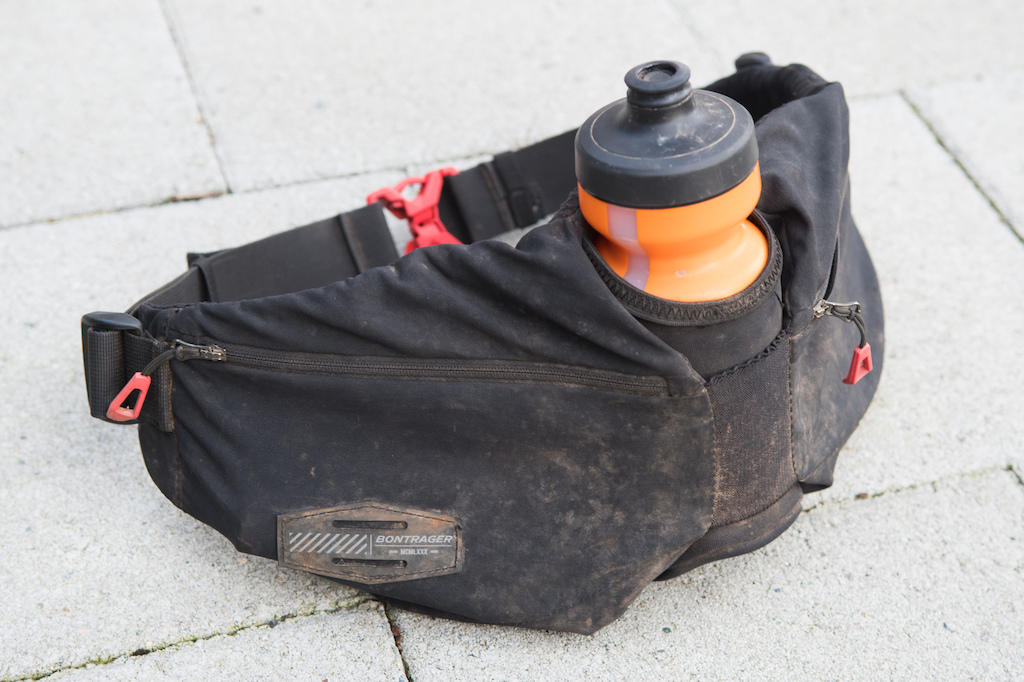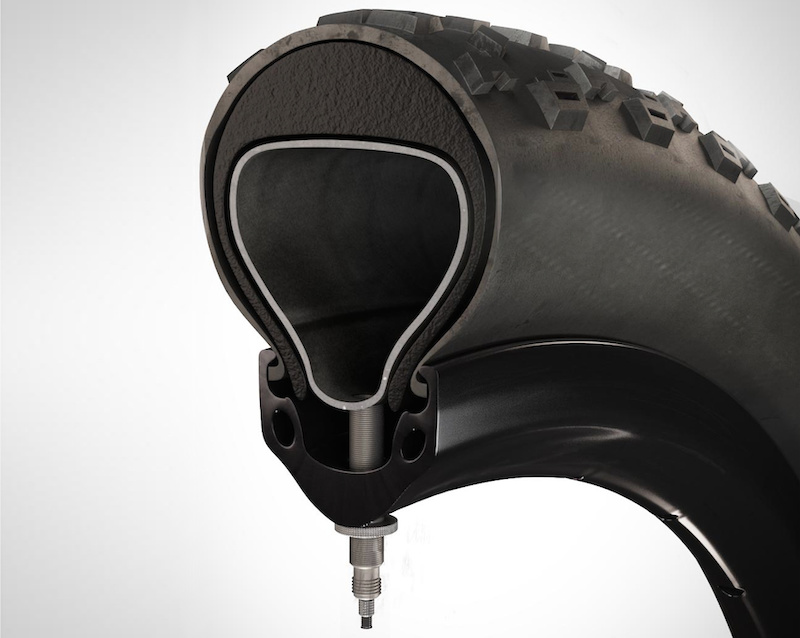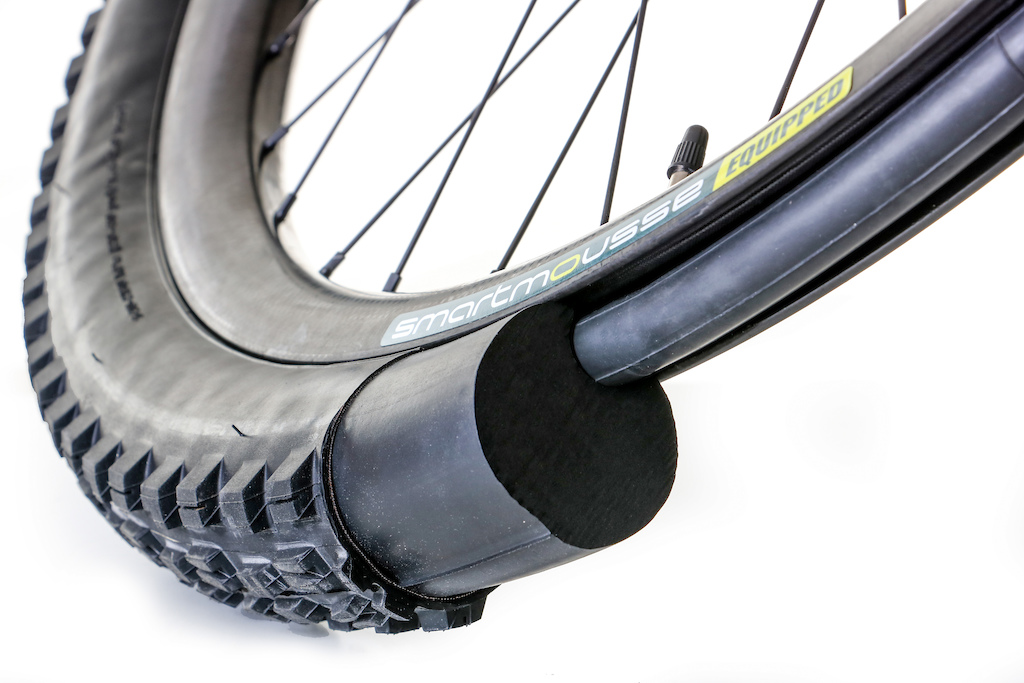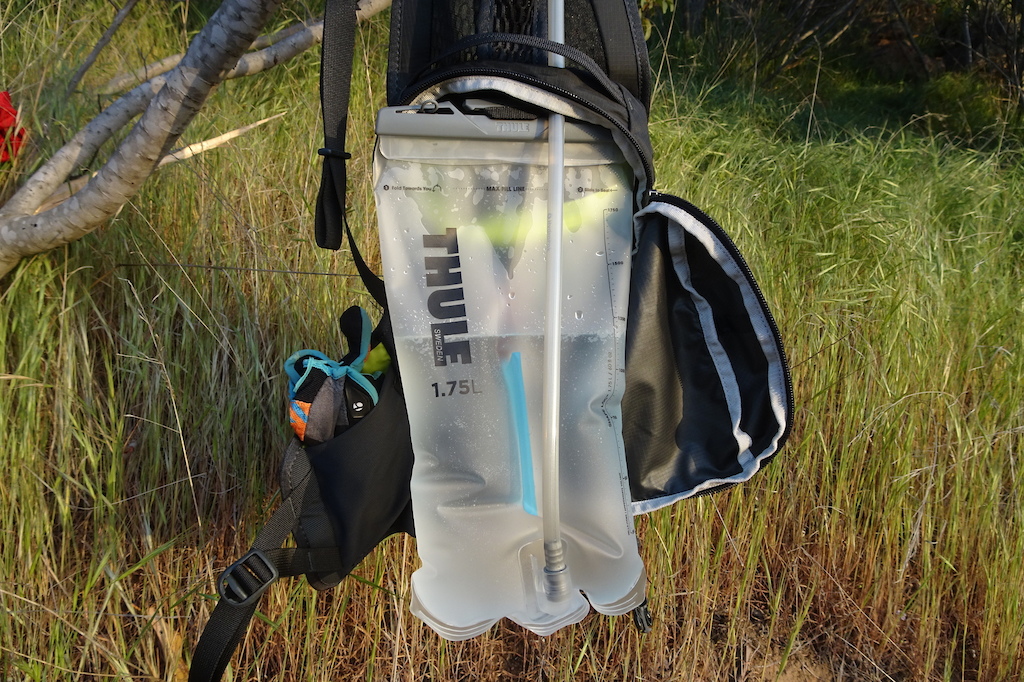Here at Pinkbike, we get inundated with all kinds of questions, ranging from the basic "Can I have stickers" to more in-depth, soul-searching types of queries like if you should pop the question or what to name your first child. Ask Pinkbike is an occasional column where we'll be hand-picking and answering questions that have been keeping readers up at night, although we'll likely steer clear of those last two and keep it more tech oriented.
Why Can't I Run Lower Tire Pressure? Question: Thegb1212 asks in the
All-Mountain/Cross-Country Forum:
I have a 30mm inner width rim and [Maxxis] 2.4 EXO casing WT tires mounted up tubeless. If I even think about running lower than 27psi, my tires will start to fold over and squirm all over the place. I am not burping at those pressures, but the squirm is not confidence inspiring. I am also only 165lb. It doesn't make sense to me how folks can run pressures in the low 20s with a 'standard' tubeless set up. I am talking about non-fatbike, no Plus, just plain old 2.2 to 2.6" tires. So tell me, how can RC comfortably run 24/22 psi on 2.3" ? What am I missing? Don't get me wrong, I love the minimal flats, lower weight, and less fuss I have had with tubeless, but lower pressures aren't one benefit that I have found is possible. | Good question. Tubeless tire pressures in the 22 to 25 psi range are not considered low, even by aggressive riders. The pressures I use are representative of most of us here at PB and the top guns I associate with on my home trails. Your combination of a 2.4-inch Maxxis WT tire with an EXO casing on a 30-millimeter rim should be plenty stiff above 25 psi, but that does not mean that you are wrong if you need more pressure to keep your tires stabilized on your rims.
Every tire and rim combination has a pressure sweet spot where the lines intersect for casing stability, traction, and suppleness. Physics dictates that larger volume tires require less pressure to achieve the same casing stiffness, and that wider rims improve lateral stability, but riding and pedaling style can trump that science.
I also weigh 165 pounds, but my riding style is such that I don't exaggerate my lean angles in the corners or put much lateral force into the frame. Some riders do, which requires stiffer casings and higher pressures to counter that off-center tire loading. You are not burping air, but still feeling tire squirm with your present rim and tire combo which suggests that you are one of them.
Before you consider purchasing new tires with thicker casings, however, be sure that your tire gauge is reading correctly. One of my floor pumps reads over four psi high, which indicates that I am running pressures around 27 to 30 psi. Now I use a Schwalbe digital air gauge to ensure accuracy. Borrow a good gauge and verify your pressures first.—RC |
Best Hip Pack for Shorter Rides? Question: @jkelm asks in the
Bikes, Parts, and Gear forum:
Looking for a hip pack to take on 1-2 hour rides. Ideally it will hold a water bottle, with enough room for my phone, keys, multi-tool and misc small items. I've looked at the Dakine Hot Laps, best curious if there are any smaller or better options out there? | Hip packs are most definitely back in fashion – just ask Lil' Wayne. He's been making the talk show rounds in support of his new album while wearing one, although its contents might be a little different than what you'd want to bring on a long ride...or maybe not.
In any case, Bontrager's Rapid Pack remains my favorite method of carrying a few tools, snacks, and a water bottle. It doesn't shift around, there are internal dividers that help with organization, and the water bottle holder is where it should be, in the center, rather than off to one side. If you already have a bottle on your bike, that center pocket is the perfect spot to stash a lightweight jacket or glasses / goggles. The fabric is fairly light, but after over a year of regular use my pack is still going strong. I'd highly recommend checking one out.— Mike Kazimer |
Michelin Le Systeme? Question: @ORTOGONAL555 asks in the
Downhill Forum:
Hello everybody. I've recently discovered that Michelin developed a run flat setup called "Le Systeme" for DH racing at the end of the 90s~early 2000s. I'm just curious about it and I can't find more about it on the internet. If anyone has info please chime in, thanks. |
There's a good reason why you cannot find out any information about 'Le Systeme,' and that's because it was one of the most secretive things in downhill racing, ever. Fables of riders and mechanics signing non-disclosure agreements and never being allowed to look inside, Michelin mechanics delivering the wheelsets fitted with tires and inflated to racers the morning of the race, and taking them away as soon as they were back in the pits, have circulated for years.
From the rumors I heard, there were three possibilities, one was that it was some kind of inner tube wrapped in foam, similar to things we have seen come back on the market recently: Tannus and Vittoria launched their 'Armour' system last week, and earlier this year, Mr. Wolf launched their SmartMousse. Both use a similar concept, the Tannus version uses a larger inner tube with a small volume of foam for protection, and the Mr. Wolf version uses a small diameter tube to adjust the feel and density of a larger volume foam - mostly aimed at eMTB riders, partly due to its 500g+ weight.
The second possibility is that Michelin used some kind of run-flat foam/mousse (mousse is the French word), like they used on rally cars. The foam was mounted on to the wheels and compressed when the tires were inflated to keep the characteristics of the tire the same as there was no material touching the carcass of the tire. If air was lost from the tire, the reduction in pressure allowed the foam expand, filling the tire, supporting the weight of the car, and keeping the tire on.
The third throws an extra spanner, or valve, into the works. Some people claim to have spotted an extra valve on the wheels, and there was talk of a tubular tire being placed inside the main tire, which was protected by foam. A similar idea to Schwalbe's ProCore System that that does a great job of locking the tire bead on to the rim even if the external chamber loses air, and protecting the rim from damage with its high pressure 'inner tire'.
I reached out to Michelin, and Mavic, who played a part in the project with their DeeMax wheels, and even though it's been well over a decade since it was last rumored to be in use, they still replied with a strict "no comment."
—Paul Aston |
Combating Feelings of Dehydration on Rides Question: @zachinblack asks in the
Fitness, Training and Health Forum:
I am one of those guys who can never have too much water on a ride. I drink water constantly, and always feel like I need more. I know I am drinking enough, as I don't cramp up on rides, nor is my urine bright yellow, but the feeling, sensation remains. My question is this: Is there a product that will help me retain more water and hopefully diminish this feeling of constantly needing more fluids? At this point, I'd love to just be less reliant on water and make less go further, so I can forego a hydration pack and just use my on bike bottle, and at most, my hip pack's small reservoir. Am I SOL, or is there something that could help?  | I reached out to my good friend Colin Izzard, who is a coach with Carmichael Training Systems. Colin works with a lot of different athletes, including World Cup DH racers like Neko Mulally, and he suggests making sure that your everyday hydration is up to par. Starting a ride already "in the hole" is the quickest way to run yourself further into the ground. A minimum of two liters a day is recommended. If it's hot out and you're going to be doing a longer ride, increase your hydration beforehand and consider adding something that has some sodium to your water to help increase absorption.
While riding, you still have to drink water, so your idea of being less reliant on water may not be the best. You want to down 1-2 bottles an hour, and more during hot weather. When it's cold, don't forget to drink because it's still important. Ensuring you're getting 400-900mg of sodium/hour is also important to help keep you feeling good.
After riding, continue to drink water in order to replenish what you've lost. Keep up with the sodium, and a carbohydrate drink will help recovery too. Nutrition is equally important in combating feeling off, and you should always have a solid meal before riding, and try to get 200-300 calories/hour while riding.
That's a few hydration tips in short and it's certainly person and situational dependent but hopefully it helps. One thing that I've found helps me to keep hydrated when I don't want to carry a lot of supplies on a ride and there is water nearby is to bring a water filter, such as Sawyer's Mini, and stop every hour or two to filter more water. I then supplement it with a sodium/electrolyte tablet. I've successfully done quite a few longer rides with this method.
As with any other health issue, if you're not sure or consistently feeling off, check with your doctor or dietician.—Daniel Sapp |








 Member since Jul 22, 2013
Member since Jul 22, 2013
There seems to be this idea floating around that higher tire pressures somehow mean that you're a better rider, something along the lines of, "I'm such a badass that I have to ride 40 psi on DH casing tires." Running unnecessarily high tire pressures is just silly - you're missing out on traction and comfort.
Find what works for you and go with it, but there's no sense in trying to put down someone's riding ability just because they have less air in their tires than you do.
Rider weight and riding style are some of the biggest factors.
Protection for the 90 percent of the ride I don’t need it
"If it isn't square it isn't a DH rim"
Not even sure if that's an old saying.. anyways.. Cheers!
So for the «old» metric world: Weight in kg divides by Pi.
I weigh 60kg (132lbs). Front tire is a singleply Magic Mary 23x2.35 with Schwalbe procore system. The back is a a Muddy Mary 22x2.5 with DH casing and normal tube setup.
As for the Procore pressure I find that so long as you run it above 4.5bar it works fine.
Personally I value grip over rolling resistance because where I live you are either climbing up long steep stuff or going down long steep terrain and not much flat stuff. If I want to go faster downhill I just release the brakes!
I would say one thing, a lot of riders are much too worried about getting flats and over compensate!
It's calibrated by 29 years of pumping and feeling tires without gauges.
I ride with a bladdered hip pack, so my opinion might not matter, but putting the bottle in the middle has always scared me a little - potential spine injury if you fall on it, or something like that. Can anyone credible confirm (or deny) that this is cause for concern?
I may get a Poland Spring bottle, one of the Sport Cap kind, and use that instead. This way it will surely crush instead of injure your spine.
I tried lots of things before settling on having a hydration tablet before a ride on a hot day. They taste gross (they are salt) but help with water retention and my headaches have gone. Obviously water intake is massive, and if you aren't drinking enough you will suffer, but if the original poster is drinking enough, it may be that he's not enough salts (or other imbalance) preventing the body from using that water efficiently?
Read the top comment to see where Randy was born.
Schwalbe analogue gauge on my floor pump is very consistent and corresponds with thumb test
Meisner Accu-gauge (big analogue dial 0-30psi range) is very consistent and typically reads 3 psi lower than my Schwalbe floor pump
I would take any new gauge I get, analog or digital, and compare it to a known-good gauge (a very high quality shop gauge for example) before trusting it.
So it stopped using it and I use roots or stones (I stop over a stone and I compress my suspensions/tyres) to estimate if the tyre is too easy too compress or too hard .
Alot more people die from overhydration than degydration in ultra-endurance events.
The short answer to your question is that you either live in Utah where it us really hot, you have diabetes, siADH, or most probably you are thirsty because uou drink too much water. Your kidneys are adapted to a high fluid intake. This happens at a molecular level in your renal tubuli. Start drinking less when you are not training 2-2.5l/day, on short rides 1.5hrs don’t bring any water an fill up when
you get home.
www.bmj.com/content/345/bmj.e4737
It's why talking about PSI and comparing set-ups is basically totally fruitless. It changes so much based on weight, rim width, tire maker, tire width, tire volume, local terrain, a riders speed and a riders personal attitudes towards how squirmy a tire they can handle or like.
Also, unless you're spending big bucks on a gauge... from gauge to gauge, pressure readings can vary from 1 to 3 psi or more as I discovered before I bought a "better" digital gauge and realized my cheap floor pump gauge was off by 8 to 10 psi... haha!
Also there is no evidence cramping is caused by dehydration or even electrolytes, is a 200 year old myth.
1) Pay CTS for coaching.....waaaaay too much money.
2) This is the important part of the "System"-use some octane booster. EPO, HGH, even some old school anabolics if you won't get tested. It's what Chris Carmichael did to get his results, as well as that Lance Johnson guy. This "System" works, and if you get results and don't get caught, you might even build an overpriced coaching business based on the results of other dopers (even if THEY get caught eventually).
I also recommend pickle or olive juice. As a bonus, I eat the pickles or olives that get in the way.
If you really want low sugar, Coconut water (Potassium rich) and a pinch of salt (sodium rich). The advantage of this is you get more potassium, which is often minimal in electrolyte tablets, powders, or gels
They get clogged up with sealant and start giving messed up readings. I'm 210# (93kg) and run my EXOs at 21F and 24R on 29 internal rims without any problems. Granted it isn't rocky where I ride but I certainly don't have any sidewall squirm.
In my mind, a 2.6 inch tire will need equal or more pressure than a 2.3 on the same rim, to provide the same lateral stiffness. Or is only referring to vertical impact i.e. rim protection?
This is an odd analogy, but if you blow up a balloon, the air inside it is all at the same pressure. It is somewhat hard to deform the main balloon if you poke it, but it is very easy to deform that little thing (stem?) that hangs off the main balloon where you blow it up. The radius of the balloon at the stem is small, so the stress in the balloon rubber is also small, so it is easy to deform. Bigger tire radius results in a harder to deform casing, all else equal.
labaustere.com/collections/frontpage/products/minimize-hydration-lumbar-pack
Stan’s sentry 32
Fox 36 160
165 lbs
17 psi
Happy
There is no best hip pack because they are all bro.
(waits for down votes)